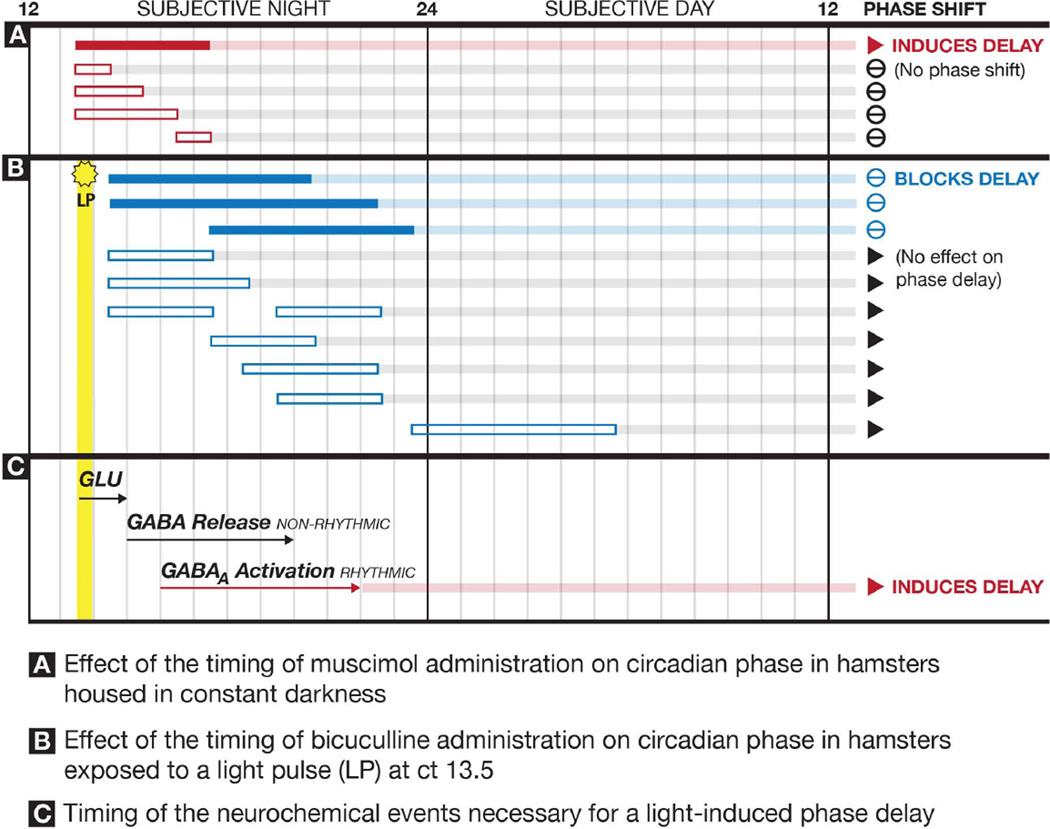Figure 6.
Summary of the effects of over 1700 injections containing muscimol, bicuculline or vehicle into the SCN region on the phase of circadian rhythms. A. Solid red bar indicates the timing of SCN injections in which muscimol induces a significant phase delay in the locomotor rhythm. Open red bars indicate the timing of SCN injections of muscimol that did not produce significant phase delays. B. Solid blue bars indicate the timing of SCN injections in which bicuculline significantly inhibited light-induced phase delays. Open blue bars indicate the timing of SCN injections of bicuculline that did not significantly inhibit light-induced phase delays. Yellow bar indicates the timing of the 15-minute light pulse. C. Proposed sequence of neurochemical events within the SCN necessary for a light pulse to induce a phase delay. Light induces release of glutamate (GLU) that activates NMDA receptors within the SCN for seconds and possibly minutes (initial transient response). The transient responses to light induce activity in non-rhythmic SCN neurons that begins 30–60 minutes after the light pulse resulting in the sustained release of GABA for 6 or more hours. The sustained GABA release from non-rhythmic neurons results in the sustained activation of GABAA receptors on rhythmic SCN neurons producing a phase delay in the molecular clock mechanisms.

